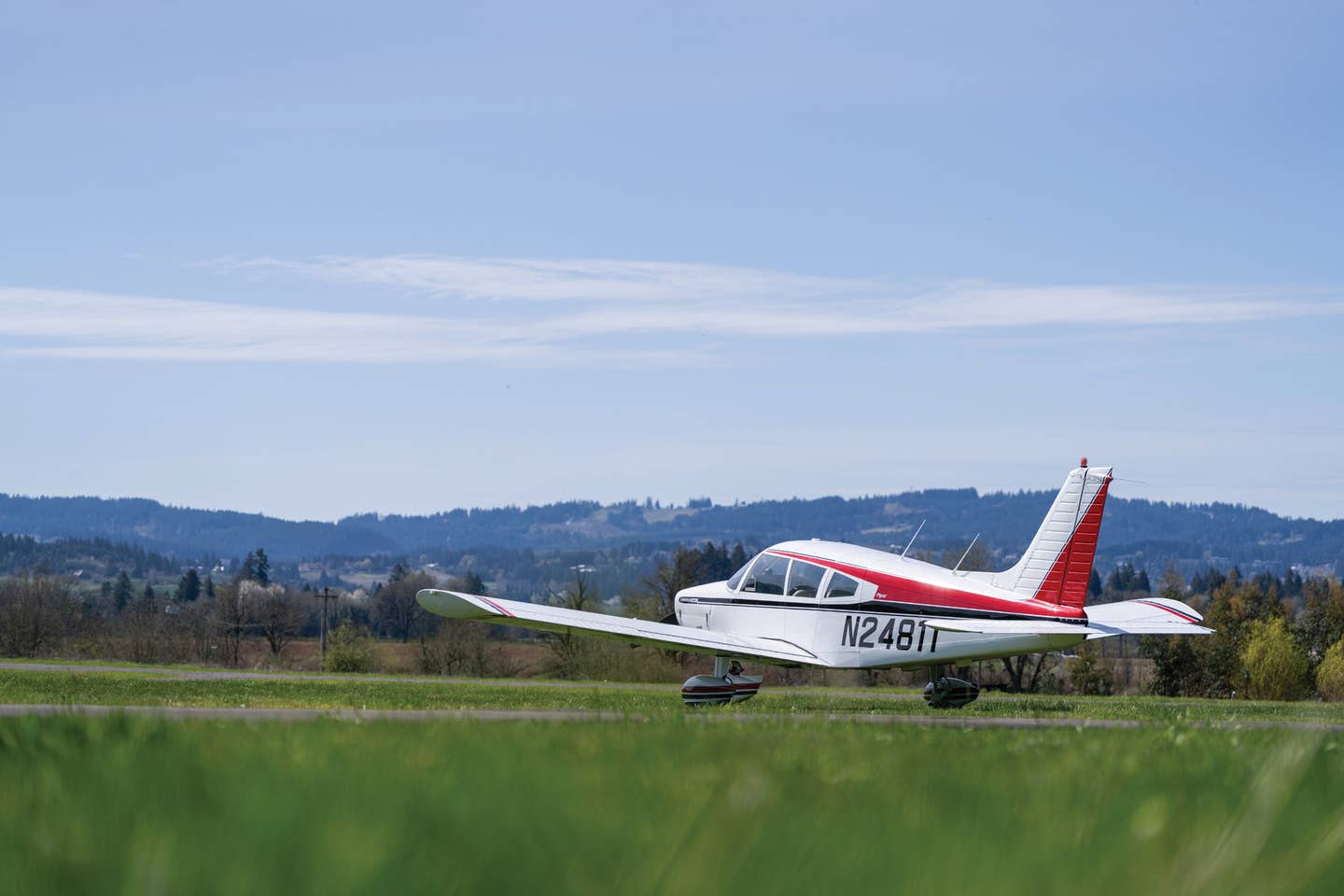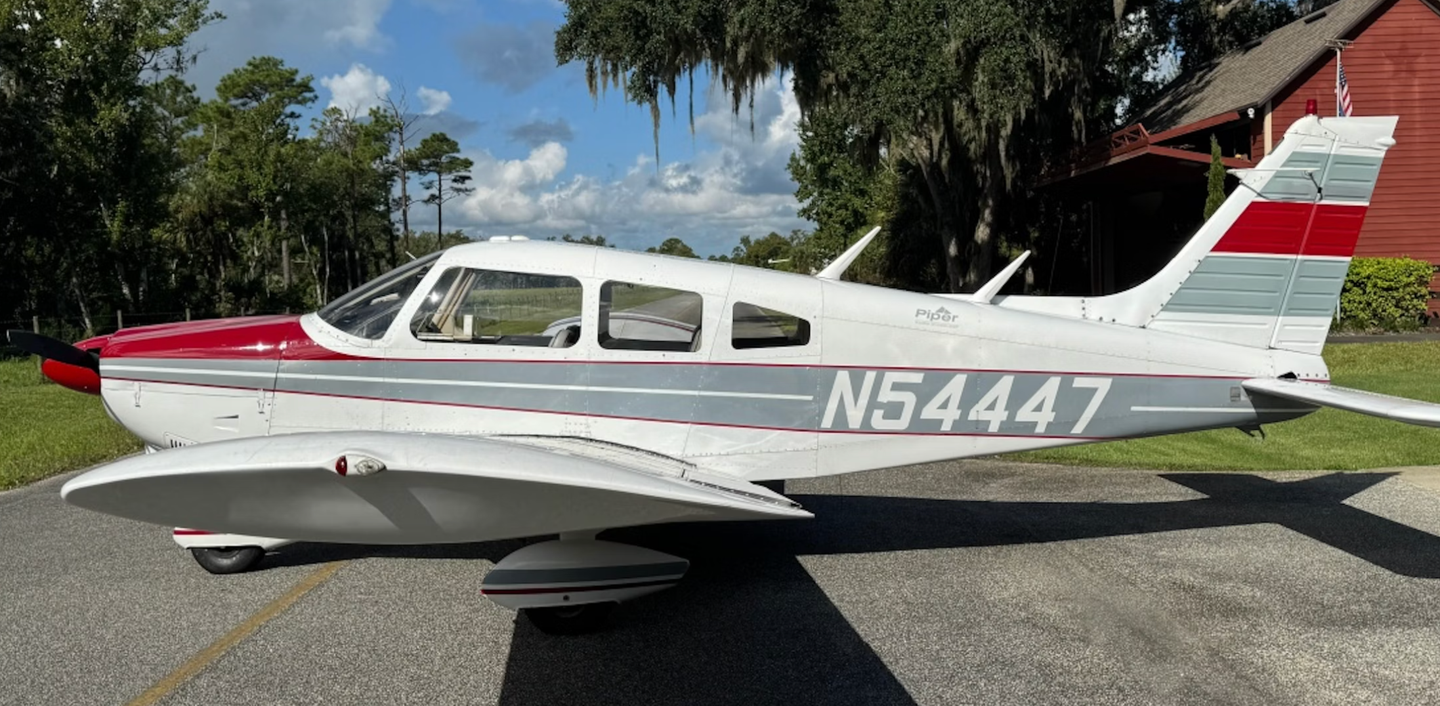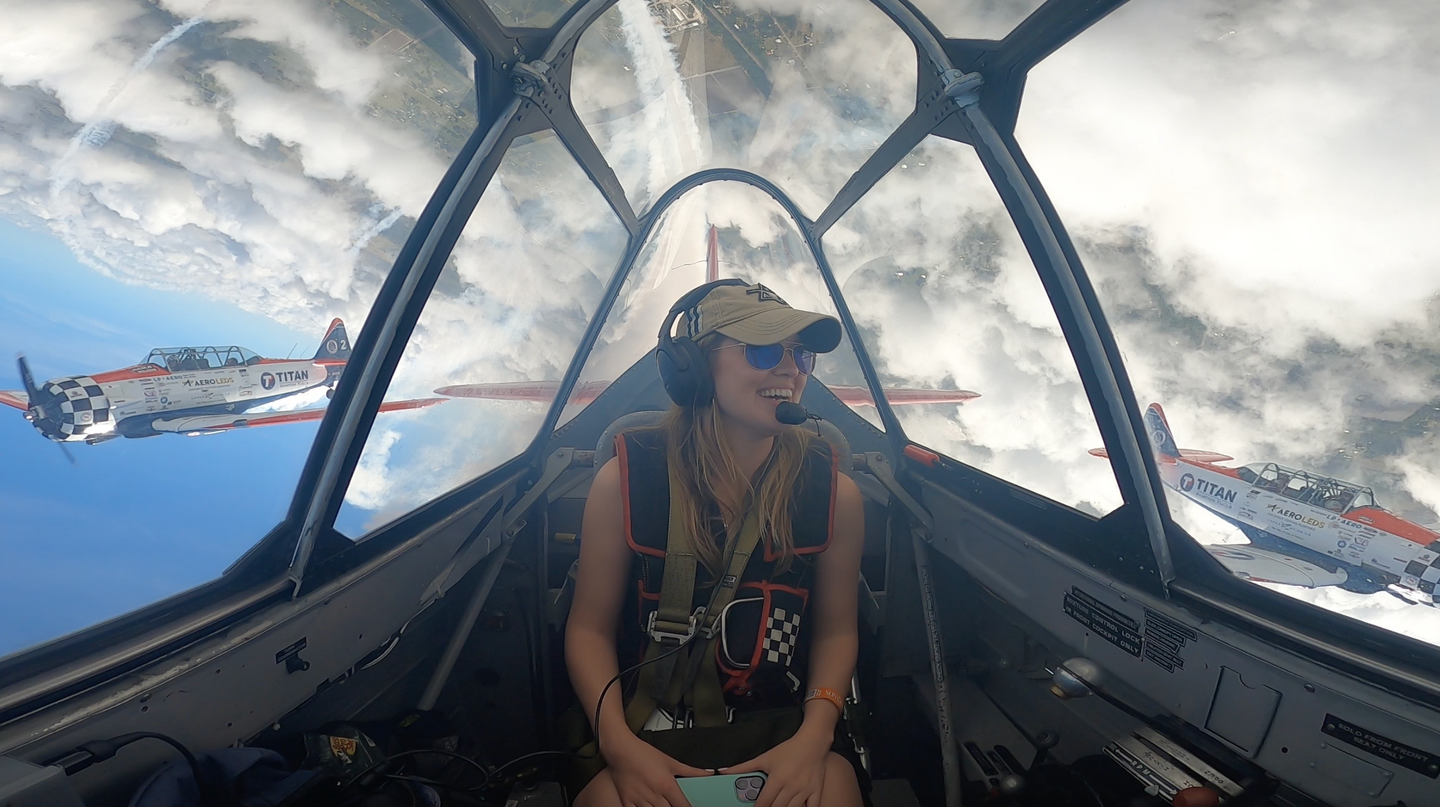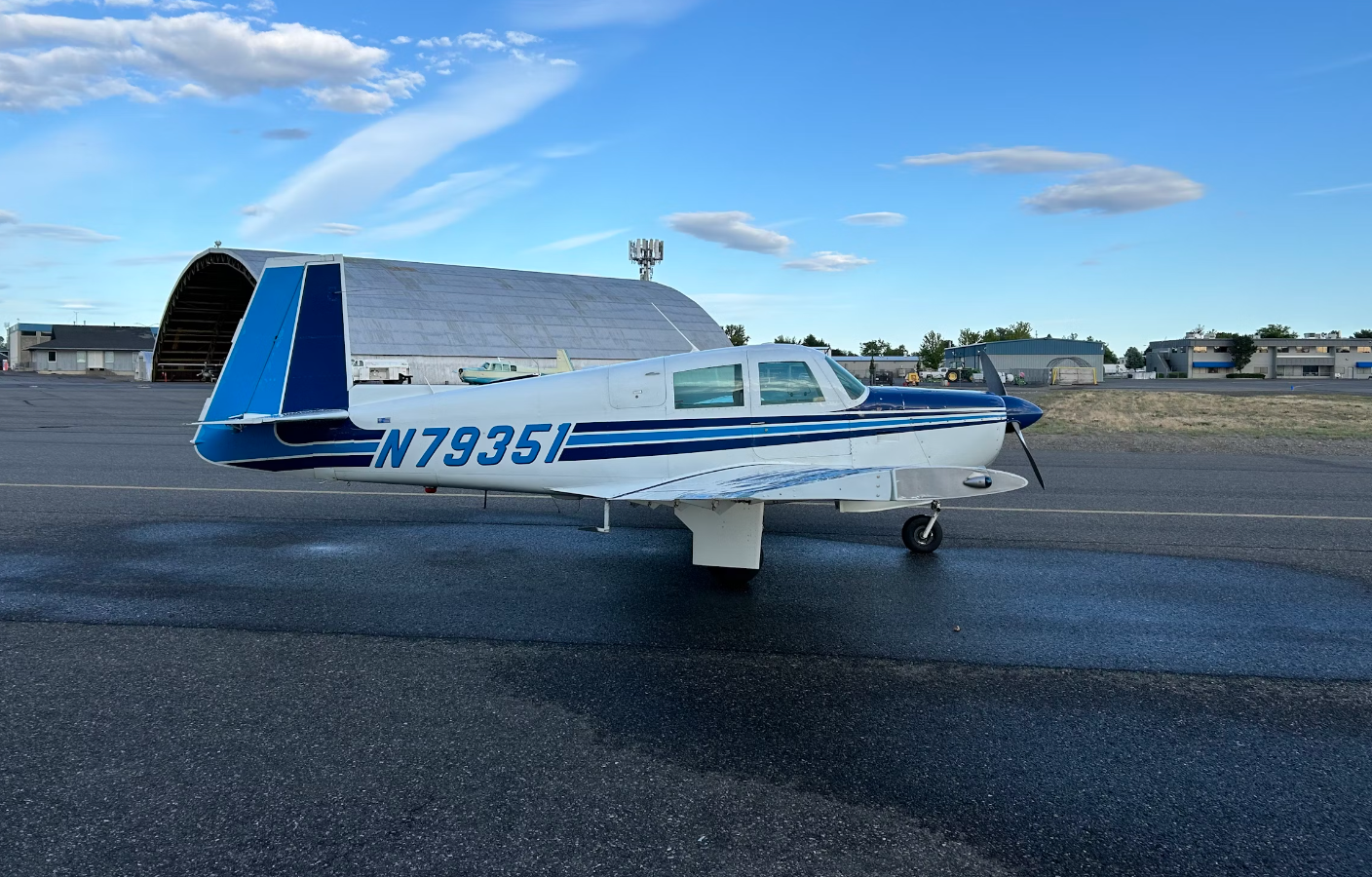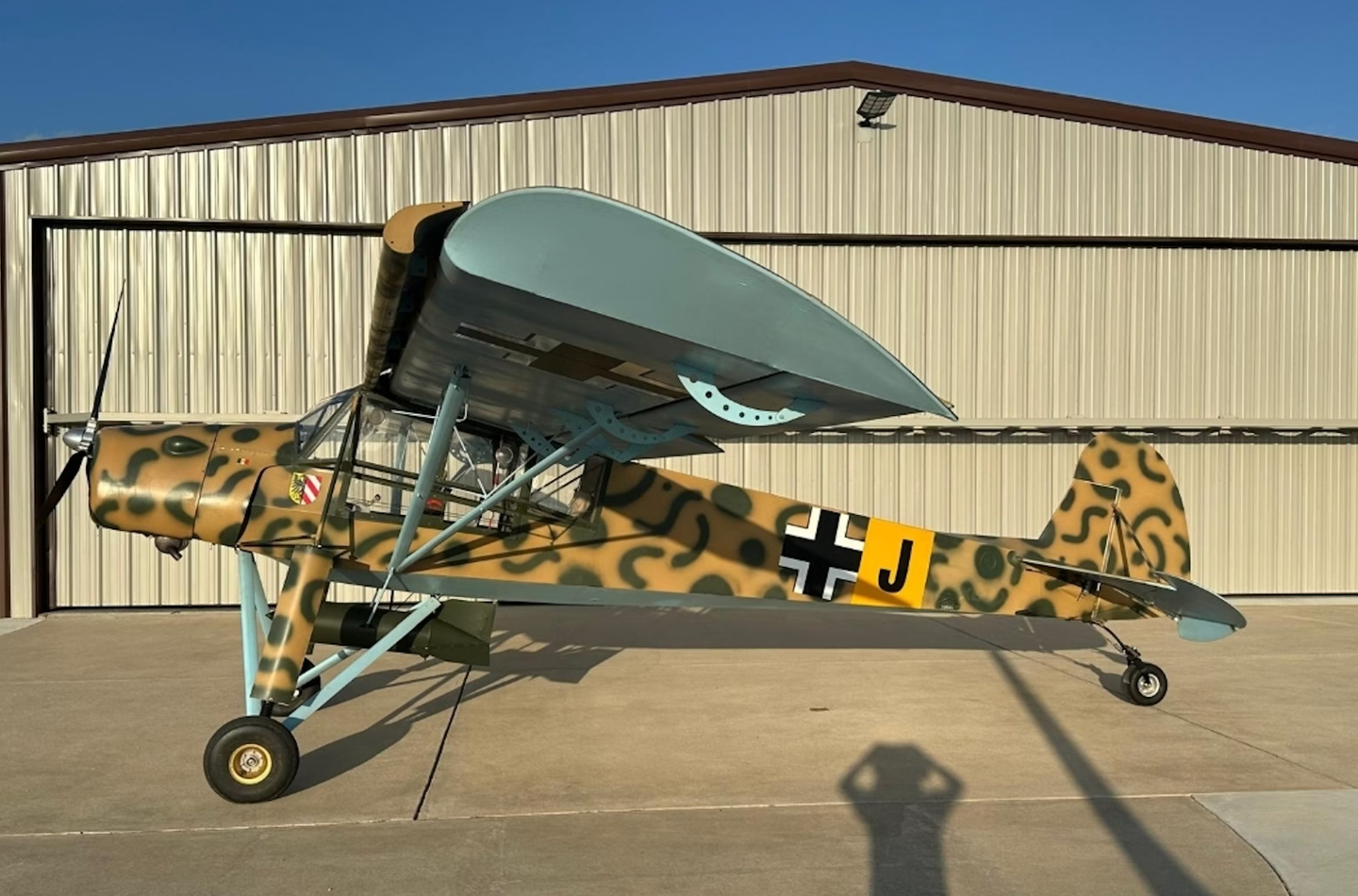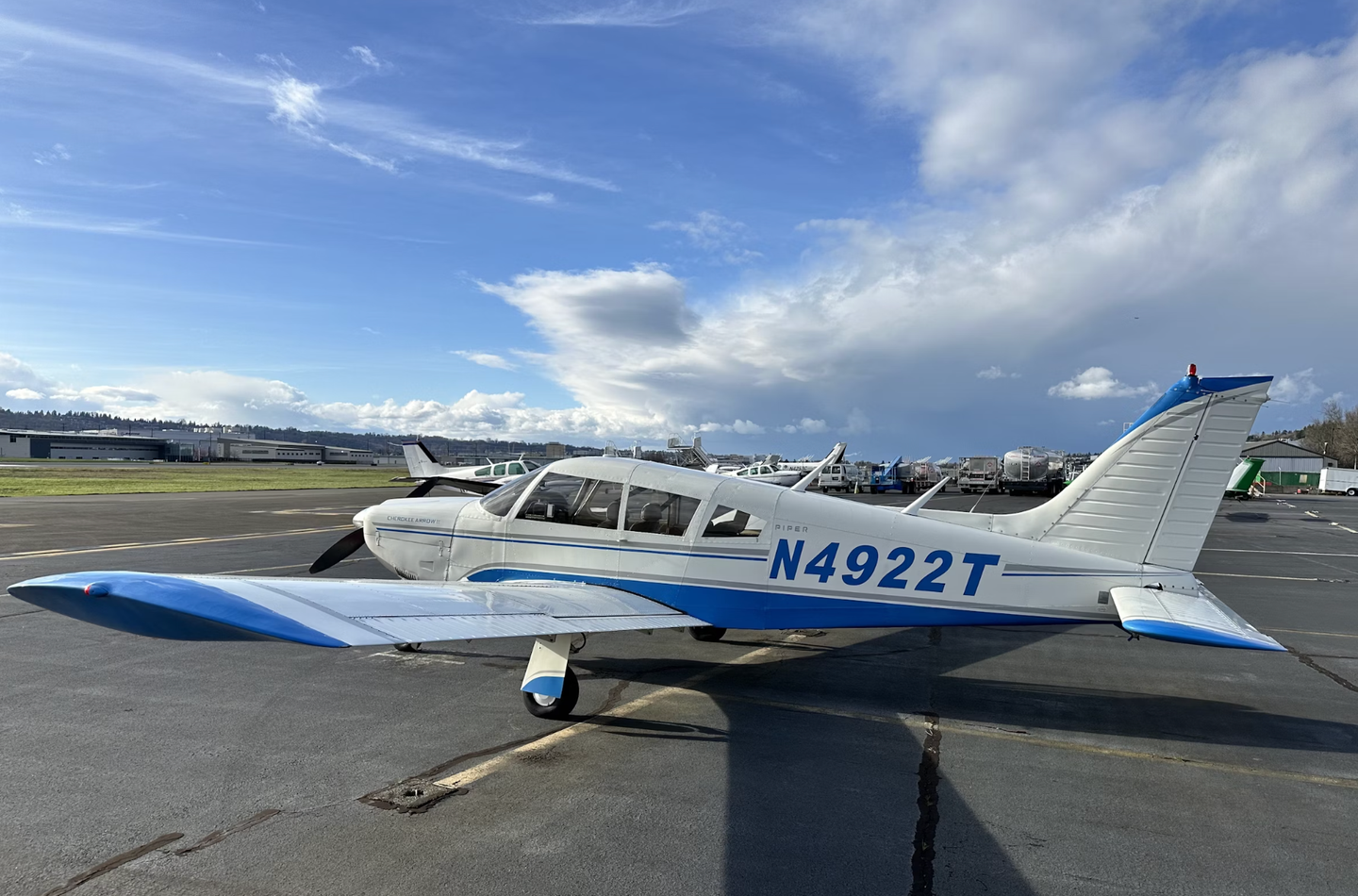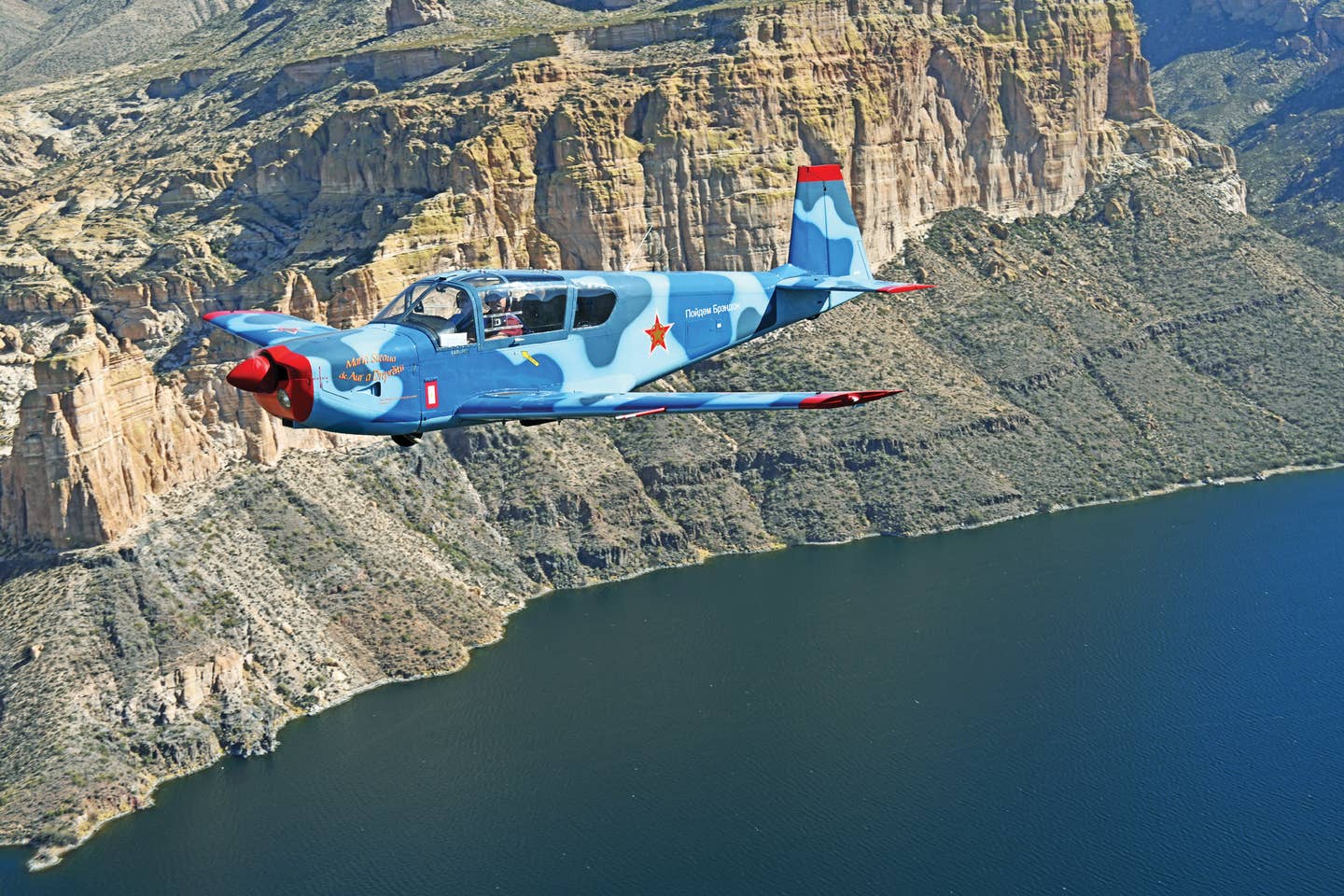
Photos by Jay Selman
What’s better than flying a unique Romanian-built military trainer/light attack airplane? Tony Anger, who is based at Falcon Field (KMSC) in Mesa, Arizona, has found a special purpose for flying his IAR-823.
Wait, a what? IAR (Industria Aeronautica Romana) was founded in 1925 in an effort to reduce the Royal Romanian Air Force’s reliance on other countries for its supply of aircraft. Additionally, IAR built a number of foreign-designed aircraft under license.
The IAR-823, which was designed as a primary trainer for both military and civilian use, made its maiden flight in June 1973. Over the next nine years, a total of 80 examples were built. While the Romanian Air Force was the primary customer, 12 were delivered to the Angolan Air Force, configured as light attack platforms, complete with underwing hardpoints to carry a variety of weaponry. Ten went to Aeroclubul Romaniei, and another four were delivered to the Hungarian Aeronautical Association, an aero club. With the fall of the Iron Curtain, approximately 35 were exported to the United States.
Meet the Owner
Before discussing the IAR-823, it is important to know about the unusual owner of this unusual airplane. When it comes to his flying career, Anger, 69, has been around the proverbial block.
“I have been flying ever since I can remember,” Anger said. “To tell you the truth, I don't even remember not knowing how to fly. My dad was a captain for Eastern Airlines. When he wasn’t pushing airliners across the sky, he was flying in airshows for fun and profit. He was one of the original guys that started the Flying Circus Aerodrome in Virginia back in 1971.
“I started flying early, you know, a typical airline pilot’s kid. I soloed on my 16th birthday. I learned how to fly in a Fairchild PT-23, but two weeks before my birthday, we crashed it. It was a rather inglorious way to begin a lifetime of flying. And, you know, most kids would have been smart enough to never get around airplanes again, but I couldn't wait to get to school to tell my friends that I had been in an airplane crash. I thought that was the coolest thing ever.”
Anger didn’t learn and grew up in the airshow business.
“I was wing-walking for my dad when I was 16 and even did car-to-plane transfers and just all the nutty stuff, and then finally started flying myself,” he said. “It took flying in airshows for 16 years for me to finally realize that I wasn't going to make any money doing that, so I ended up applying for a flying job with Colgan Airways, a small commuter airline based in Manassas, Virginia.”
While at Colgan, Anger checked out as a first officer on the Shorts 330, one of the first 30-seat airliners designed specifically for the burgeoning regional airline community, as it then referred to itself. Soon after Presidential Airways (a successor to Colgan) failed, Anger decided to try his luck with Air Virginia, another growing regional carrier based in Lynchburg. He was flying the Shorts again and flew with the carrier until it went out of business.
“I’d had enough of the regional airline industry, and I landed a job flying a 727 for a private charter company down in Fort Lauderdale [Florida],” Anger said. “Let me tell you how that played out. The day we finished class, a guy came in and said, ‘Hey, I’ve got good news and bad news. The good news is, everybody passed the test. You guys did great. The bad news is that we filed for Chapter 11 bankruptcy last night.’ There I was, sitting in a hotel room and I was freaking out. Out of nowhere, this lady…called me up and said, ‘I'm from Command [Airways] in Poughkeepsie [New York], and we'd like to offer you a job flying the Shorts.’ It turns out that Command bought both of Colgan’s Shorts when that airline went bankrupt.
“During our conversation, just off the cuff, I asked if I could be a captain. I heard ruffling papers, and she said, ‘Yeah, you could be a captain.’ I asked, ‘Well, when’s the interview?’ and she patiently explained, ‘You don’t have to interview, just show up.’ That is sort of how things were done back then.”
Anger flew the Shorts for Command for about two and a half years and then got hired with America West in 1989. Anger and his wife, Karen, relocated to Phoenix, and he spent the next 35 years surviving the transitions from America West to US Airways to, finally, American Airlines. He started out on the Dash 8, eventually upgrading to the Boeing 737 and, finally, the Airbus A320 family. He retired in 2020.
“After about a year and a half of retirement, my wife very lovingly said something to the effect of, ‘Get your fat [butt] off the couch and go find something to do,’” he said. “I got a job with Kalitta Charters [headquartered in Ypsilanti, Michigan]. That was all during COVID, and when I was hired, they told me I didn't have to have the COVID shot. However, after I completed my training, they told me that, yes, I had to have the COVID shot. I refused, and that ended my extremely short career with Kalitta.”
Shortly after Anger left Kalitta, a friend of his told him about Empire Airlines, which operates a fleet of Cessna 208 Caravans on behalf of FedEx. He works there today.
Enter the IAR-823
Anger has owned a number of GA aircraft over the years. Prior to acquiring the IAR-823, his pride and joy was a Fairchild PT-26.
“I first saw this IAR-823 in 2015 when my friend Kirk Wicker and his brother owned it,” he said. “This was before I owned the PT-26. Kirk was on the U.S. aerobatic team, and he's done aerobatics all over the world. When I found out the airplane was for sale, I flew out to Virginia to make a deal. I was all set to buy it, but he had a girlfriend who got in the way because she didn’t want him to sell it, and he backed out.”
Anger ended up owning a Piper Cherokee and then the PT-26.
“A few years later, Kirk’s brother passed away and then Kirk developed some medical issues,” he said. “I found out that the IAR might be for sale again, so I went back and redid the deal with Kirk. I actually bought it for less than I offered him the first time, so that was a good deal. I had originally planned to use it for my wife and myself, but it did have a military history and a really cool paint scheme. I wondered what we could do with it, so we decided to use it as a backup airplane to the PT. Anger says that the IAR-823 is a really cool little airplane.
“This one was one of the 12 that were used in Angola as light attack aircraft,” he said. “It has hard points on the wing for carrying ordinance and, in fact, still has the ‘pickle button’ on the stick. Approximately 78-80 were built over nine years, and roughly half of those have been imported to the U.S. Most of them are airworthy. Sometimes, it is a little difficult to find parts. Fortunately, we have it listed as experimental, which, among other things, allows us to manufacture parts locally when necessary.”
He admits that sometimes they are able to manufacture parts better than the original issue.
“It's just a great airplane,” Anger said. “Because it's aerobatic, you know it's not going to come apart during maneuvers. The plane was designed by Radu Manicatide, a well-known Russian engineer living in Romania at a time when Romania was still part of the Communist Bloc, and the Russians tend to overbuild everything. I'm pretty sure it was the last airplane he designed.”
Although the IAR-823 was designed primarily as a military trainer, several of them were sold as private aircraft.
“It is a great airplane, with about the same performance as a Bonanza or something else in that category,” he said, noting that at normal cruise you're going “about 150 knots, or you can go up to 200, if you don't mind burning that much gas. It consumes around 18 gph at normal cruise.”
The plane is powered by a Lycoming 6-cylinder IO-540. Thanks to the retractable gear, it has good cruise speed to go with strong climb performance. Yet, according to Anger, it flies like a jet.
“It's the way they designed it,” he said. “This would be the airplane that you would go into when you did your initial training, and then you would progress to the L39. Interestingly, the IAR has the exact same instruments as the L39. So, everything was in percentage.”
Pilots working up the ranks would benefit from the similarities.
“There is a reason that they don't have these in Romania anymore,” he said. “As I understand it, avgas is no longer available. I think everything there is diesel or jet fuel. So these planes just sat around until somebody found out about them. I think he was a French guy who took them all apart, packed him up, put him in crates, and sent them to France. Someone in New Hampshire bought 40 of them.”
Actually, there are still a few at home in Romania, according to the IAR-823 website dedicated to the airplane.
“…There are four aircraft preserved: No. 01 at the Central Military Museum in Bucharest, Nos. 15 and 19 at the Aviation Museum in Pipera (moved from Otopeni), and No. 51 at the Henry Coanda Air Force Academy in Brasov,” he said
For Anger, the IAR-823 is the perfect unusual warbird with real military provenance and a backstory almost as curious and circuitous as his own.
Giving Back to Veterans Through Flight
In 2016, Tony Anger was flying the Commemorative Air Force B-17 based at Falcon Field (KMSC) in Mesa, Arizona.
“One Saturday, this young man had just come home from Iraq and wanted to go for a flight in the B-17 to commemorate his grandfather, who had flown B-17 in World War II,” Anger said. “Sadly, his grandfather had passed away while the young man was deployed in Iraq. He wanted to memorialize him, so he had his grandfather’s wings and logbook. Then he went to pay and he handed the lady his card and she said, ‘That will be $425,’ and he grabbed it right back out of her hands and he said, ‘I thought it was $42.50.’ And I felt awful.”
With the B-17 ride unattainable, Anger made the young man a different offer.
“I asked him, ‘How'd you like to go for a ride in an airplane that your grandfather learned how to fly in?’” Anger said. “He asked how much it would cost, and I replied, ‘Nothing.’”
Anger took him up in his Fairchild PT-23 and told him about the history of the airplane and so on.
“We got back to the hangar, and we had a couple of beers and talked a little bit,” he said. “We were laughing and crying, laughing and crying. I went home, and I was just so overwhelmed at what had happened that I told my wife that I wanted to do more of this. She responded, ‘You're out of your mind. You’re getting ready to retire and we can't afford this.’ I responded, ‘I'm just going to give it to God and see what happens.’”
In the first year, Anger flew more than 100 veterans and saw the potential. He formed a nonprofit charitable organization to support the business, Grounded No More.
“I researched the process and taught myself what I needed to do,” he said. “We actually got accepted the very first time we tried [to apply], which from what I hear is pretty unusual. So, we started off with people donating $5 or $10. There's one gentleman in Texas—I absolutely love him. He would donate $100 every month. Today we have four or five American Legions in the area, and they give me an average of $4,000 at a time, which sure helps.”
Anger met Hope Harrison in 2022. He had been Facebook friends with her husband, who was an army contractor flying Dash 8s in South Africa. The base where he was located was attacked by Suni rebels, and he and his copilot tried to take off. Their Dash 8 was hit by gunfire, and they were both killed.
“It was just so sad, and she had a beautiful little 3-year-old daughter at the time,” Anger said. “One day, I was inspired to give her a call. I said, ‘Hey, I knew your husband through Facebook. We weren't really good friends or anything, but he seemed like a wonderful guy, and I would just like to offer a flight in my plane. I would love for you to come out and go for a flight so you can see what he did.’”
Local news got wind of it as well.
“I took her and her daughter up in the Mooney I had at the time,” he said. “The daughter looked adorable in her little flight suit, and the press just ate this up. That's when I got the idea of doing Gold Star fights. As a side note, Hope’s son, Jeremiah, followed in his stepfather’s footsteps and is now an airline pilot himself.”
To date, Grounded No More has taken up 678 veterans, with a perfect safety record.
“I've got a crew of about 30 people who come out almost every week,” Anger said. “Everybody is a volunteer. In fact, it's in our contract that nobody gets paid. It’s pretty amazing. People will hear about us or see us and come from out of the blue to work with us. We have one young man who is the head of the CityServe program with Grand Canyon University. He just happened to see us at the Buckeye Air Fair one day, and now he's one of our biggest volunteers. He comes out nearly every week. Now he's learning how to fly. It’s especially gratifying to see that we are inspiring future aviators.”
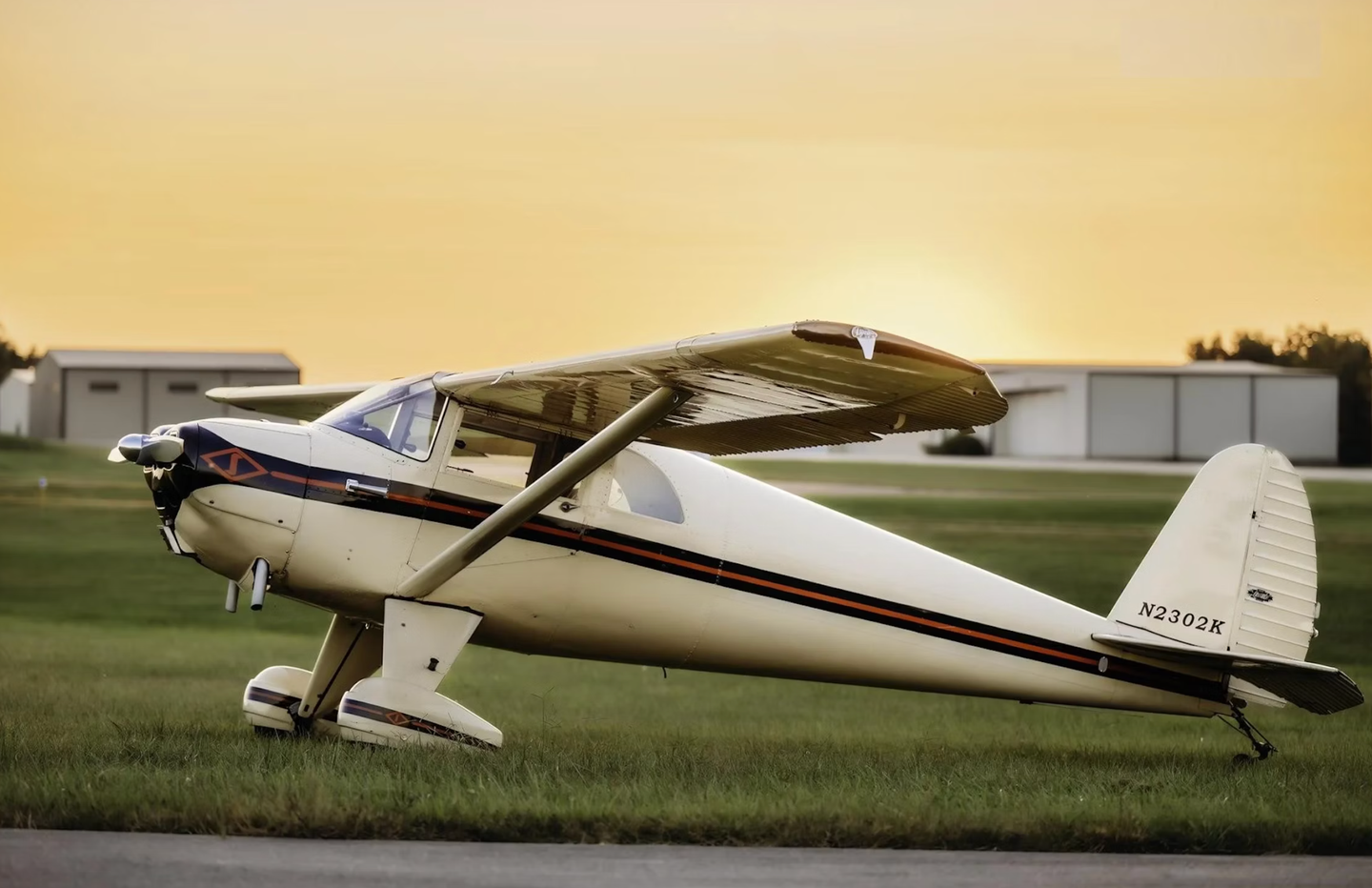
Subscribe to Our Newsletter
Get the latest Plane & Pilot Magazine stories delivered directly to your inbox

